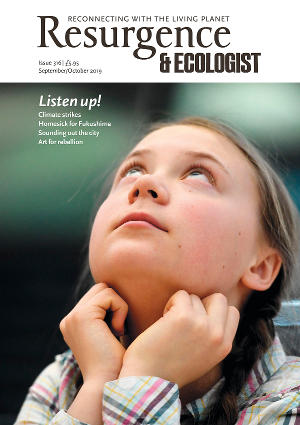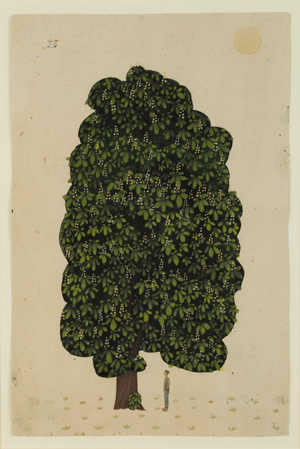Stand under a sycamore and hear tinkling like a metal wind chime moving in the breeze; move towards a yew and the sound is like flattened bells; another step and it changes again. You are listening to Music for Trees, a new project run by the Royal Parks in London, which is using mobile phone technology to provide visitors with a different experience of being with trees.
The project was initiated by Matt Steinmann, an arboriculturalist with Royal Parks. “When I’m out surveying I often listen to the radio. I’m looking at trees one by one, as a very methodical process, sometimes spending two minutes looking at a tree, sometimes spending ten minutes looking at a tree, so it’s quite a meditative process,” he told Resurgence & Ecologist. “Every so often I’m standing under a tree gazing up into its canopy and watching the light filtering through the leaves, and the piece of music is just right. I was interested straight away in the idea of phasing and multilayering music. Composers like Steve Reich and Philip Glass play with that idea.”
He wanted to share that experience with visitors, and after toying with putting microphones on trees or placing live musicians underneath them, he settled on the idea of using geolocative technology to do the job instead. A geolocation app is an application that delivers information based on your GPS location, like Google Maps and Waze. “You load it, you stick it in your pocket, and your location alone triggers the playback on your screen,” Steinmann said.
He asked six students at the nearby Royal Academy if they could compose pieces for 30 tree species, which would be applied to 150 trees in part of the park. When visitors using the app approached the trees, they would hear the composition through their headphones. These tracks interweave as visitors pass under the crossing canopies of different trees. This means that as the trees are approached from different directions it will always sound slightly different.
Each piece of music ranges from 30 to 90 seconds and runs on a loop. With every piece looping at different times, this proved an interesting challenge to the composers. “You can never control the overall sound at any one particular time,” said Isaac Oliver Short, one of the students involved in the project. “For me it was very different from anything I’d done before,” he added. “It’s interesting to hear a piece of music that’s been created and then relate it to a tree, but to start from a tree as an original idea is quite odd.” From first simply visiting the trees and gaining a sensory experience of them, he researched them, took photos and sat underneath the trees themselves to compose the piece. “I felt that writing music underneath the tree really helped to create the reflection of the tree.”
But if you’re plugged into headphones, aren’t you effectively muting an important part of the experience of being with trees? “I completely agree,” Steinmann said. “You are doing that. It’s not an organic response. It’s a narrative response. It’s storytelling, and that’s an important part of being human.”
You can listen to Marianne Brown, Matt Steinmann and presenter Amanda Carpenter discussing the project on the podcast Planet Pod. www.theplanetpod.com








